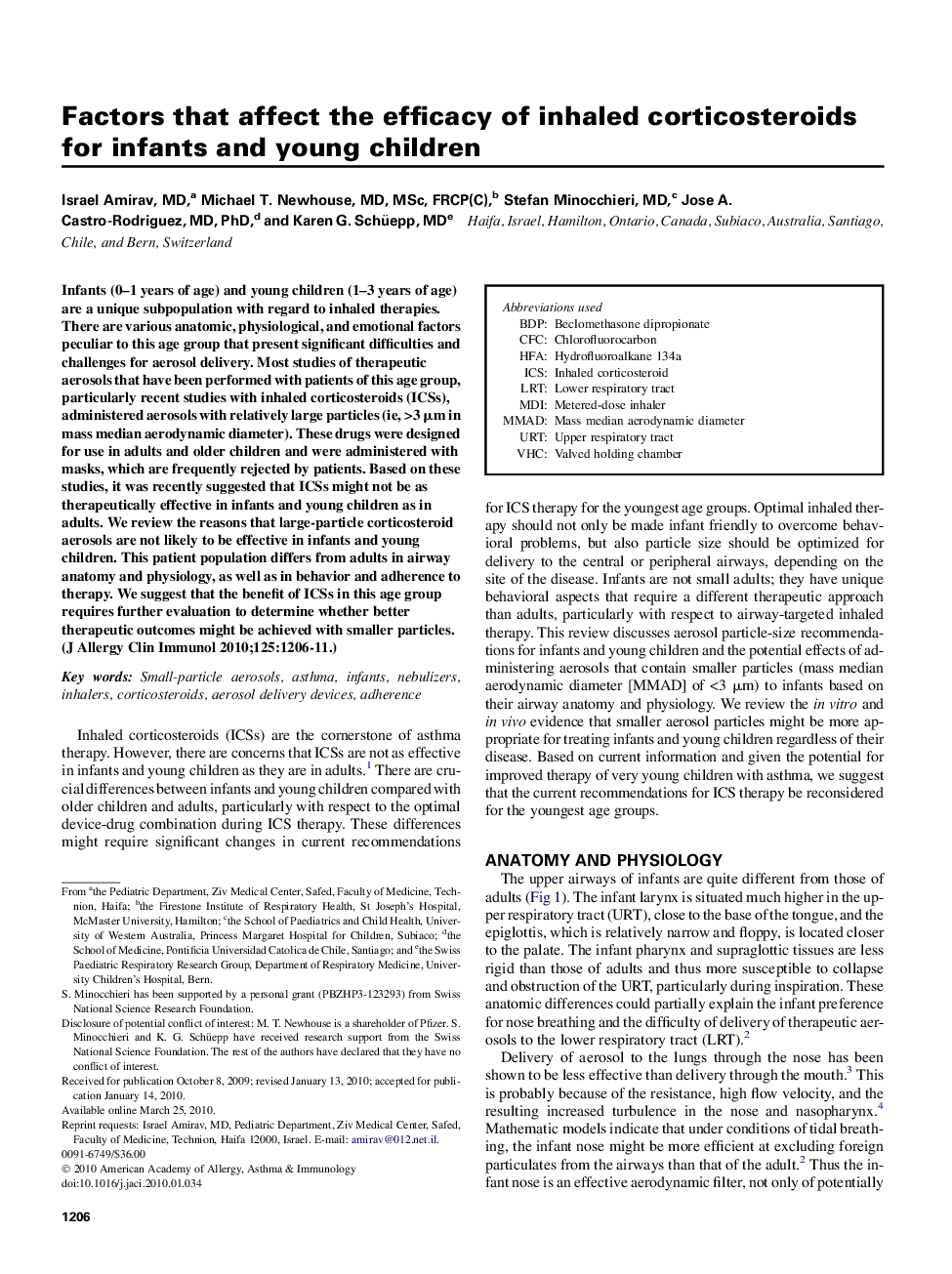| Article ID | Journal | Published Year | Pages | File Type |
|---|---|---|---|---|
| 6067672 | Journal of Allergy and Clinical Immunology | 2010 | 6 Pages |
Abstract
Infants (0-1 years of age) and young children (1-3 years of age) are a unique subpopulation with regard to inhaled therapies. There are various anatomic, physiological, and emotional factors peculiar to this age group that present significant difficulties and challenges for aerosol delivery. Most studies of therapeutic aerosols that have been performed with patients of this age group, particularly recent studies with inhaled corticosteroids (ICSs), administered aerosols with relatively large particles (ie, >3 μm in mass median aerodynamic diameter). These drugs were designed for use in adults and older children and were administered with masks, which are frequently rejected by patients. Based on these studies, it was recently suggested that ICSs might not be as therapeutically effective in infants and young children as in adults. We review the reasons that large-particle corticosteroid aerosols are not likely to be effective in infants and young children. This patient population differs from adults in airway anatomy and physiology, as well as in behavior and adherence to therapy. We suggest that the benefit of ICSs in this age group requires further evaluation to determine whether better therapeutic outcomes might be achieved with smaller particles.
Keywords
Related Topics
Life Sciences
Immunology and Microbiology
Immunology
Authors
Israel MD, Michael T. MD, MSc, FRCP(C), Stefan MD, Jose A. MD, PhD, Karen G. MD,
